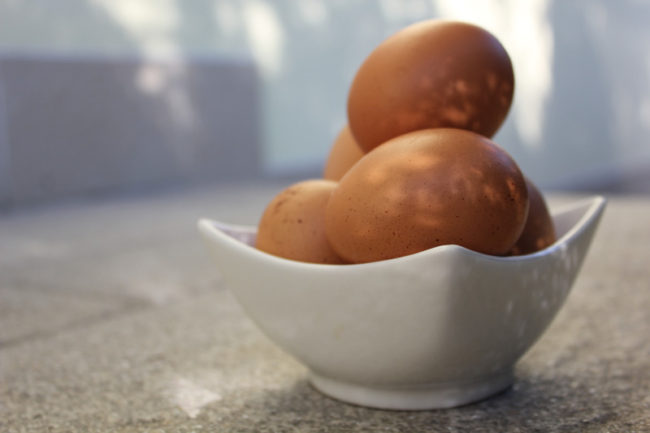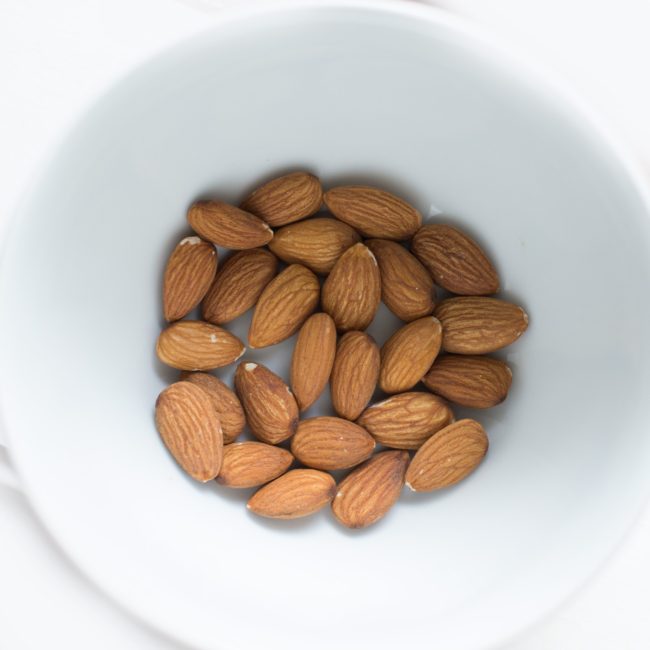Eating well requires effort. It takes time, education and awareness. Even more than that, it takes money, and in my ski bum kitchen, that’s something that’s not an easy find.
I’ve been ski bumming for about four years now, and over that tenure, I’ve learned how to fuel my athletic lifestyle on a stingy dime. It’s not easy – I’ve had to do some homework on the front and back end of my meals, learning not only how to shop but also how to prepare the foods that I’m bringing home. But I find the overall process to be an enjoyable one, and I’d like to share with you some of my Ski Bum Kitchen secrets to tight-budget, healthy eating success.
To start, here’s my grocery staples list, a collection of the 10 cheapest nutritional go-to food sources that I’ve discovered over my years as a ski bum. I’ve included these items for their nutritional value, taste and versatility. Enjoy!
Eggs are a cheap and easy source of protein. They are full of omega 3 and omega 6 fatty acids, vitamin B and folate. Buying organic will buy you more nutrition in this food category, and I recommend skipping that last PBR at apres to use your extra $3 to buy organic, omega-3 enhanced eggs. Fry them, boil them, poach and scramble them, drop them into your ramen noodle soup. There are a million ways to enjoy this protein powerhouse, and at $3-4 a dozen, they fit well into a ski bum budget.
Cheese is another quick and easy source of protein. Whether you’re adding cheddar to your breakfast sandwich, packing low-fat mozzarella string sticks into your pow day snack pack or dipping some fresh fruit into cottage cheese, this genre of protein packs a big punch for a relatively low price tag. If you can only afford one kind of cheese a week, go with low-fat cottage. You can eat it with fruit or veggies, stir it into your breakfast scramble or add it to your evening pasta sauce as a sort of ricotta-esque final touch.
On-sale animal protein – be creative. It’s important to eat meat, and if you think outside of the box, you can do so affordably. Basically, buy whatever is on sale, you can look at the clearance section or go online and see if Raise has a deal for meat at your local supermarket chain. If it’s low-fat chicken breast, awesome. If it’s not, do ground beef or turkey and cook it into a pasta sauce. Don’t forget that the deli can be an awesome source of affordable meats. You can always chop up deli ham to throw into an olive oil veggie pasta, and deli-sliced roast beef is a delicious addition to a grilled cheese sandwich or a morning omelet. If you’re buying meat that is on sale because it’s close to it’s expiration date, portion it out into appropriate serving sizes, and freeze it as soon as you get home from the store. And if there is absolutely nothing that fits your budget in the fresh meat department, remember that canned tuna is a go-to for a lean, easy and always cheap (at $1.50 to $3 a can) source of meat protein.
Raw nuts and nut butters pack a high protein, healthy fat, fiber punch for a little handful of food. If you can only afford one type, go for raw almonds. They are a source of protein and (monounsatured, aka healthy) fats, vitamin E, magnesium and potassium. When it comes to nut butters, purchase raw varieties if you can afford it, as they are more nutritional and usually contain less sodium and sugar than their roasted and “mainstream name brand” counterparts. And raw nut butters can be eaten with everything: fruits, veggies, sandwiches, pancakes, smoothies or by the quick and easy spoonful. Nuts, whole or ground, are a definite go-to for a long-lasting energy fuel source.
Kale is a super food addition to your ski bum weekly grocery cart. This veggie is a powerhouse of nutrients; it’s full of fiber, vitamin A, K, and C, antioxidants and omega-3 fatty acids. Buy organic if you can, because this leafy green, when treated with conventional pesticides, has a tendency to hold onto said chemicals (as do many conventionally raised leafy greens). Kale can be boiled, steamed, added to pasta sauces, breakfast sautés and baked into delicious and tasty “chips.” Expect to get 2 to 3 servings out of a $3 organic bunch of this delicious veggie.
Carrots are cheap, easy and cheap. Eat them raw, steamed, pureed, boiled into soups or baked as side dishes for Vitamin A, K, C, potassium, fiber and antioxidants.
Avocados have been called the “alphabet fruit” because of the high concentration of vitamins they contain. They are full of dietary fiber, (monounsaturated) fat, vitamins A, C, E, K, and B5/B6. High levels of riboflavin, niacin, folate, pantothenic acid and potassium are also found in this fruit. Just as important as the inherent nutritional value of the avocado is its incredible ability to help your body absorb fat-soluble nutrients found in other foods. Add them to salads and salsas for taste and nutrition, and they’ll also increase your body’s ability to absorb the antioxidant components found in the veggies alongside which you’re enjoying this nutritional fruit.
Garlic-flavored canned tomatoes are a great source of antioxidants, and they also contain vitamins C, A, K, and potassium. Canned tomatoes are cheap. They hold a long shelf life, and you can add them to anything. I like to buy garlic or Italian-flavored cans to add a little more flavor to the dishes that I’m preparing. Add canned tomatoes to stews, chilis, pastas and casseroles.
Whole grain bread is an easy staple. I’ve found the “Ezekiel” brand bread (usually found in the frozen section of the grocery store) to be a great investment. They are a little more expensive (they’ll usually run you $6 a loaf), but you’ll get way more bang to your buck. You feel more satisfied and energized after two pieces of this bread than you will after six pieces of white Wonder Bread because whole grain breads are much more nutritious (full of things like fiber and protein) than their bleached and simple-carb counterparts.
Whole grain pasta is worth spending a little extra money on. Be sure to look for “whole grain,” not “whole wheat.” Whole grain pastas (and bread products, for that matter) have been made with flour that is ground with all parts of the nutritious grain incorporated into the mill. Whole wheat, refined flours are made with only the endosperm of the kernel. Eat whole grain pastas with veggies and olive oil, tomato sauce, grilled chicken or even baked into a cheesy casserole. This is an easy and long-lasting fuel source for your epic ski touring endeavors.
Of course, I’ve only highlighted a few of the many nutritious food options that are available. Happy shopping, and happy turns!













